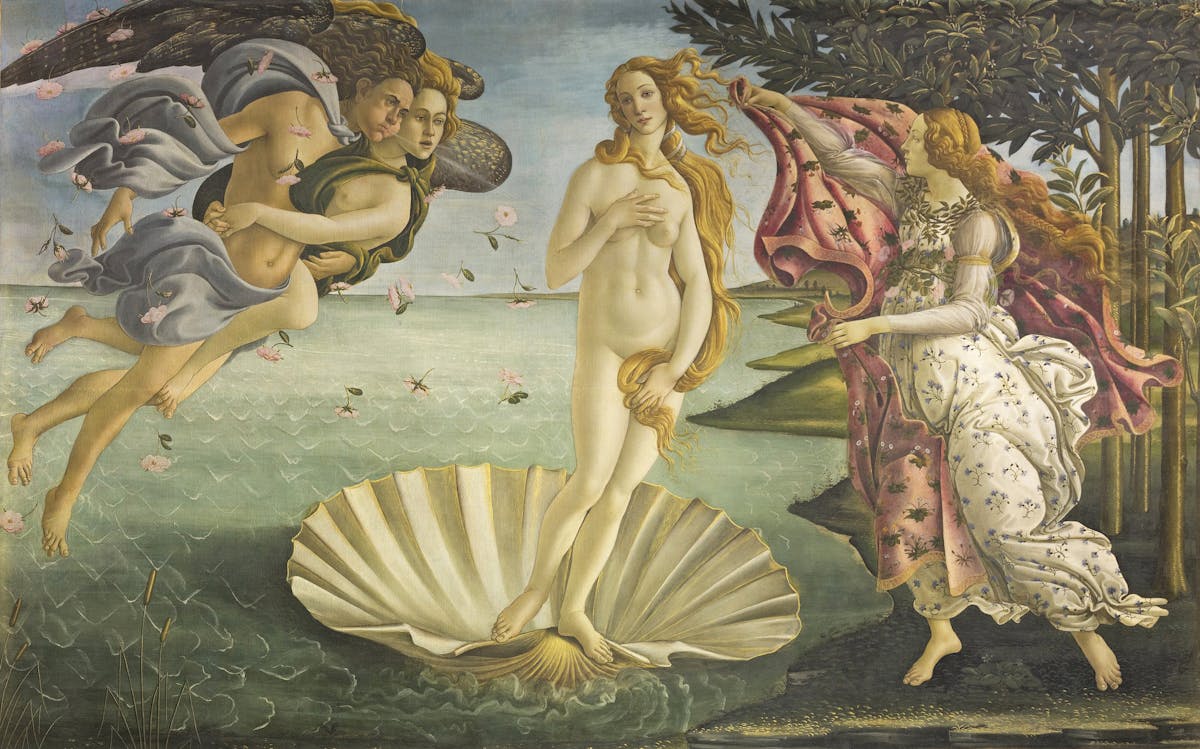The Early Renaissance: The Birth of Venus
In Culture and Values A Survey of the Humanities: Chapter 12, Lawrence Cunningham introduces the early Renaissance in the city of Florence. In the text, I was able to understand and see how Florence prosper as this new city that's full of aesthetics and how it shaped itself through the blooming of artistic ideas and perspectives. Despite the fact that Europe was recovering from the plague, there was a great, new growth in economics and trades through the rebirth ( Cunningham 266 ). Through this era, artists such as painters, sculptors, etc. begun to emerge and introduces the rebirth through classical works of art. These classical rebirth works of art were created by artists such as Leonardo da Vinci, Fra Angelico, Donatello, Paolo Uccello, etc. But one artist from this era caught my attention through his piece of work which is Sandro Botticelli. Botticelli's piece, The Birth of Venus, has become one of the major paintings in the early Renaissance and it's eye-catching to visually see this art and its composition.
One of Sandro Botticelli's works has become one of the major paintings in the early Renaissance that has left many amazed. Botticelli painted La Primavera which is one of his popular works of art before painting The Birth of Venus. In both arts are represented similar figures, yet I found The Birth of Venus more intriguing. The composition of this art is very well placed and detailed. In comparison to Middle Ages painting that's more flat with lack of perspective, Botticelli added dimension which gives the painting a balance of negative and positive space. Botticelli uses a mixture of dull and muted colors yet it emphasizes the main figure in the painting. This becomes very important when expressing the meaning of the painting. As for The Birth of Venus, it brings a focus to the Venus figure and the wind gods surrounded. Not only does it bring focus but gives the audience a sense of the beauty of the figure which is Boticelli's main intention. Motived by Platonism, "Boticelli is not trying to depict not a particular woman but the essential ideal of female beauty" ( Cunningham 283 ).
Something interesting that I found out in chapter 12 in regards to Sandro Botticelli is how he's related to Lorenzo il Magnifico who's best known for his poem "The Song of Bacchus". This is interesting because Lorenzo is the son of Pireo de' Medici ( Cunningham 280 ) and you may wonder to yourself, why does the name Medici sound familiar? Well to answer that question, the Medici family is a powerhouse to the city of Florence and had a branch bank around Europe. In addition, I read that The Birth of Venus is one of the works of art that was commissioned by the Medici family. I found it very amusing how one powerhouse family even through generation was able to be a huge foundation to the early Reinassance.
Here's a video that you can watch that describes more in-depth of the composition of The Birth of Venus and the sense of beauty that I talked about that the painting illustrates. ( Watch from 2:26 - 3:00 )
Work Cited
Cunningham, Lawrence, et al. Culture & Values a Survey of the Humanities. Cengage Learning, 2018.
“The Birth of Venus by Botticelli.” Visit Uffizi, www.visituffizi.org/artworks/the-birth-of-venus-by-sandro-botticelli/.
“The Birth of Venus by Botticelli.” The Birth of Venus by Botticelli | Artworks | Uffizi Galleries, UFFIZI GALLERIES, www.uffizi.it/en/artworks/birth-of-venus.
Botticelli , Sandro, and Alessandro Filipepi . “Birth of Venus.” La Nascita Di Venere, Virtual Uffizi Gallery, www.virtualuffizi.com/birth-of-venus.html.

Comments
Post a Comment